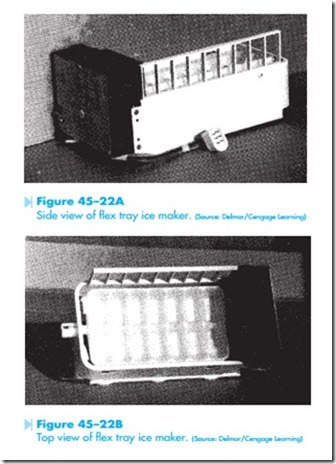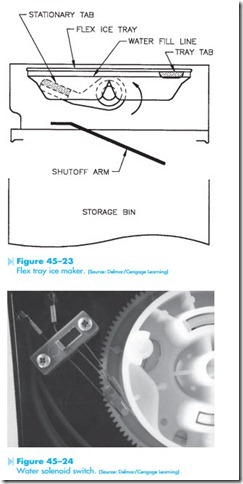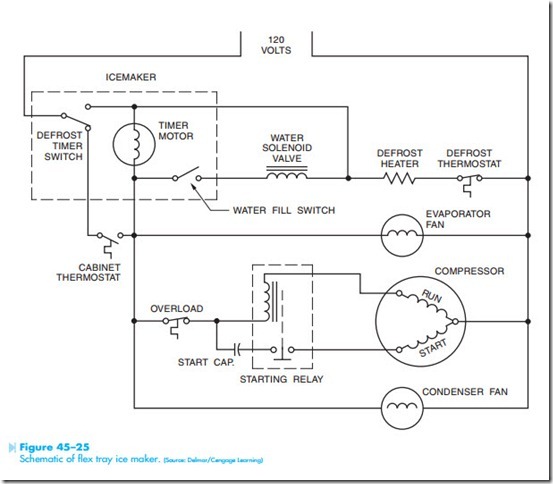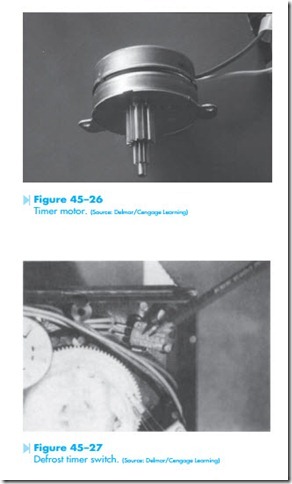FLEX TRAY ICE MAKERS
Another type of household ice maker is known as the flex tray, Figures 45–22A and 45–22B. Although flex tray type ice makers are no longer manufactured, many are still in service, making it necessary for technicians in the field to understand their operation. Flex tray ice makers differ from the compact ice makers in several ways. Flex tray ice makers fill a tray with water and then, after some
length of time, turn the tray to dump the cubes into a storage bin, Figure 45-23. At a point during the ejection cycle, a tab located on one side of the rear of the tray contacts a stationary stop. The front of the tray continues to turn, causing the tray to flex or bend at about a 20° angle. This flexing action causes the cubes to dump into the storage bin. Notice that the time necessary to complete one cycle is about 13.3 minutes. When the turning tray approaches the upright position again, a cam operated switch energizes a water solenoid valve for a period of about 13 seconds and refills the tray with approximately 8 ounces of water, Figure 45–24.
Note that replacement motors for this type of ice maker operate at a higher rate of speed than the original motors supplied with the unit. The new motors cause an ejection cycle to occur every 90 minutes instead of 120 minutes. For this reason,
the water fill switch should be changed with the motor to prevent short cycling of the fill cycle.
The principle of operation of the flex tray ice maker is different than that of the compact type. The flex tray ice maker is incorporated in the same circuit with the defrost timer, Figure 45–25. Because this type of ice maker does not need a mold heater or separate thermostat, it contains only three electrical components:
1. A timer motor, which operates both the de- frost timer and the ice maker, Figure 45–26. This motor contains a two-stage output gear. One gear operates the time cycle for the defrost heater, and the other gear operates the ice maker. The defrost cycle operates every 9.6 hours of timer motor running time, and the ice maker operates every 2 hours of
timer motor running time. When the appliance is in the freeze cycle, the timer motor can operate only when both the cabinet thermostat and the defrost heater thermostat are closed. During the defrost cycle, however, the timer motor will continue to operate regardless of the condition of either thermostat.
2. Defrost timer switch, Figure 45–27.
3. Water fill switch, Figure 45–24.
Another operating difference is that the flex tray ice maker is more dependent on mechanical control
than electrical control. The shutoff arm located at the bottom of the ice maker senses the level of ice in the storage bin. When this arm is in the down position, it permits a spring-loaded pin to move for- ward and lock a gear in place, Figure 45–28. This locked gear permits the timing motor to turn the tray through one revolution and eject the ice into the storage bin. The pin is mechanically reset at the end of each ejection cycle.
When the shutoff arm is held up, the pin will not be released and the tray will not enter into an ejection cycle. The operation of the ice maker can be manually stopped by lifting the arm above its normal turnoff position.




